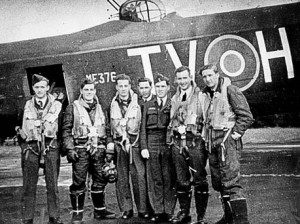
When I got there, members of our organization, including myself, clustered the meeting chairs into a smaller grouping. It appeared there would be fewer people coming today. Indeed, the president pushed the lectern closer to the chairs since there wouldn’t be as large an audience.
“Not very many here today,” one man said.
“Getting worse too,” said another, noting the recent passing of a friend and regular member.
I joined the Aircrew Association of Ontario about 25 years ago. I became an associate member (since back then most members were veterans of the Second World War) as a means of connecting with a group of men and women with first-hand experiences of military aviation in Canada.
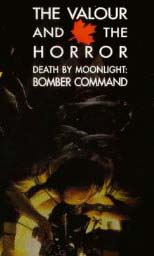
From that working relationship have come several books, many magazine articles and scores of very close friendships. In its heyday the Aircrew Association proved a powerful lobby, not to be trifled with. It campaigned to preserve historic air force sites, for the support of its cadet programs and for air force POWs to be compensated. It even challenged the CBC producers of “The Valour and the Horror” documentary all the way to the Canadian Senate. Today, with the average age of air force vets around 90, Aircrew Association membership has fallen off.
Among the last to arrive, last Saturday morning, was the association member in charge of booking guest speakers.
“Got to my car and it had a flat tire. When I finally got on my way, I realized I’d forgotten all my notes on the upcoming speakers,” he said. “It’s been a bad morning.”
It was about to get worse. Oh, the general business portion of the meeting proceeded smoothly. Those present accepted the skimpy minutes of the previous meeting. The treasurer reported a healthy bank account (even though lower membership meant less annual dues). The membership chair said there were still 86 active card-carriers.
And the president led a lively discussion about whether the association should coincide its annual summer barbeque with another air force group since both had falling membership. But what became painfully evident, at the end of the business meeting, was that the morning’s guest speaker was AWOL.
“No matter,” some of us said. “There are enough seasoned vets in the room to offer personal aviation stories as a stop-gap.”
So, while fewer in number, Aircrew members had plenty of wartime stories to fill the guest speaker absence. Jack Lumley, who flew Cansos with an RCAF rescue unit described a post-war operation searching for a missing fisherman. Chuck Casson described an unexpected op that took his crew to Hawaii.
And an author member (me) filled the remaining time with a wartime story about air force mothers exchanging letters waiting for the system to inform them of the fate of their sons following a bombing run in 1943.
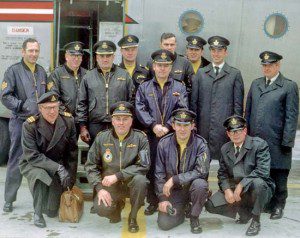
We were about to adjourn the meeting when one more hand went up. Mort Lightstone, a retired RCAF navigator, had a final story to offer. During the Cold War, Lightstone explained that he had served aboard Hercules aircraft, Canada’s workhorse transport planes. He recalled the era of the famous “unification of the forces” back in 1968, when then minister Paul Hellyer blended Canada’s Army, Navy and Air Force into a combined Canadian Forces (CF) organization. Lightstone said he’d witnessed the amalgamation first-hand. It wasn’t pretty.
He recalled, for example, the first time he’d landed at Lahr, Germany, where Canadian Forces (army) remained stationed into the 1990s.
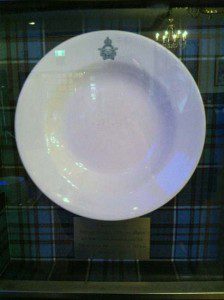 “I went into the mess for a drink and a bite to eat,” he said. “There was a nice spread of food. Ahead of me was a Canadian army guy. He took one look at a plate with the Royal Canadian Air Force coat of arms on it, said, ‘I’m not eating off an Air Force plate,’ and smashed it into a hundred pieces on the floor.”
“I went into the mess for a drink and a bite to eat,” he said. “There was a nice spread of food. Ahead of me was a Canadian army guy. He took one look at a plate with the Royal Canadian Air Force coat of arms on it, said, ‘I’m not eating off an Air Force plate,’ and smashed it into a hundred pieces on the floor.”
Lightstone learned that the integration of the forces would soon ensure that all remaining Army, Navy or Air Force porcelain would be de-commissioned and replaced with eating utensils adorned with a CF logo, or no logo at all. He offered to take a half-dozen RCAF soup bowls off the hands of the kitchen staff. That was fine with them. Next trip through Lahr, he liberated half a dozen bread plates and next time half a dozen coffee cups. And so on.
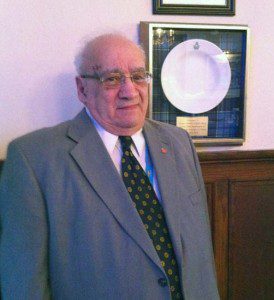
“Eventually, I had a complete dinner setting for 12 people,” Lightstone said. “I’ve used those plates at my home everyday since 1978.”
Retired Hercules navigator Lightstone punctuated his story by pointing to the mess hall wall, in which our Aircrew Association meeting was being held last Saturday, and where one of his “liberated” plates hung encased in glass with an inscription. Lightsone’s commemorative plate reflected a bygone era when Canadian wartime units had their own identity, thrived on a healthy rivalry and enjoyed greater numbers. Like many such organizations today, the passage of time and diminished membership mean less profile, lower attendance and less prominence on the plate of Canadian awareness.
I remember that guy Mort Lightstone when we were fellow navigation students at RCAF, Summerside back in 1951 (NOC 17). He was clearly destined for the top table then.
A couple of extracts from our traditional graduation publication describe Mort as follows – Hobby “Daily Routine Rumours”, Biggest Boob “Saluting F/Os while dressed in civvies”.